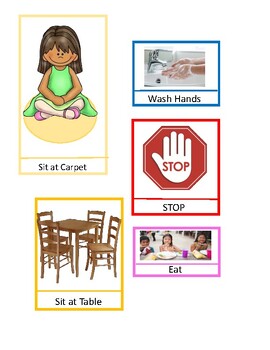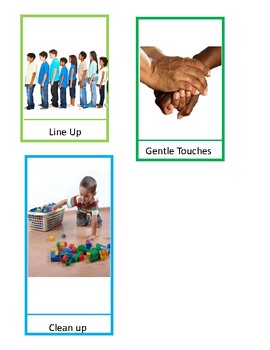Visual Cue Cards: For Lanyards or Badge Reel
- Publisher files
Description
If you downloaded this resource, please leave me a review, it would greatly help me in the future. If you have any suggestions on how I could improve this resource feel free to send me an email: ss2sk2018@gmail.com
- Reinforcing Concepts: Visual cue cards provide visual representations of concepts, ideas, or information. They serve as powerful visual aids that reinforce learning and help students solidify their understanding of various topics. By using visual cues, students can better grasp and remember important information.
- Promoting Independence: Visual cue cards can empower students to work independently. These cards can provide step-by-step instructions or reminders for tasks, procedures, or routines. Students can refer to the visual cues whenever they need guidance or support, enabling them to take ownership of their learning process.
- Enhancing Comprehension: For students with language or reading difficulties, visual cue cards can be instrumental in improving comprehension. By using visual representations, complex concepts can be simplified and made more accessible. Visual cues help students connect ideas, understand relationships between concepts, and make meaning out of information.
- Supporting Communication: Visual cue cards can be particularly helpful for students with communication challenges or language barriers. They offer a visual representation of words, phrases, or emotions, enabling students to express their needs, thoughts, or feelings. These cards can facilitate effective communication and foster inclusive classroom environments.
- Facilitating Organization and Time Management: Visual cue cards can assist students in managing their time and staying organized. By using visual schedules or checklists, students can visually track their progress, prioritize tasks, and manage their time effectively. This promotes a sense of structure, reduces anxiety, and improves productivity.
- Promoting Social Skills: Visual cue cards can aid in developing and reinforcing social skills. For example, cue cards with social scripts or visual prompts can assist students in understanding and following appropriate social behaviors and interactions. These cues can help students navigate social situations more confidently and independently.
- Supporting Special Education Needs: Visual cue cards are widely utilized in special education settings. They offer valuable support for students with diverse learning needs, including students with autism spectrum disorders, attention deficit hyperactivity disorder (ADHD), or cognitive impairments. Visual cues provide predictability, structure, and clarity, enhancing overall learning experiences for these students.
It is important to note that the effectiveness of visual cue cards may vary among individuals. Customizing the cards to suit each student's specific needs and preferences can maximize their impact. Additionally, explicit instruction and guidance from teachers or educators on how to effectively use the cue cards can further enhance their benefits for students.
Overall, visual cue cards are powerful tools that can improve comprehension, foster independence, support communication, and promote overall academic and social success for students.




